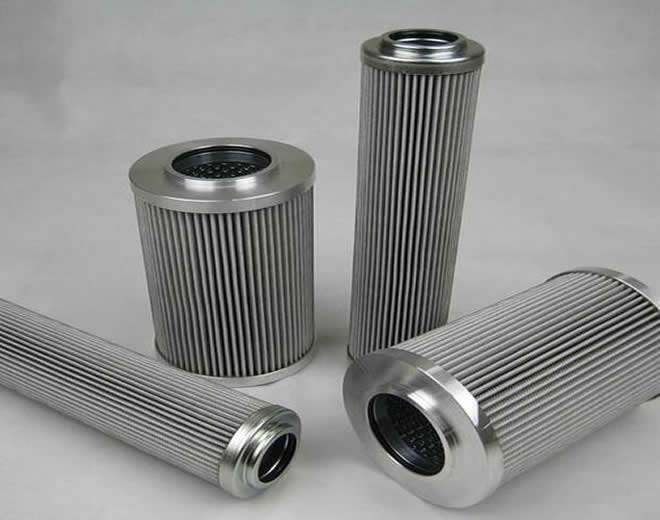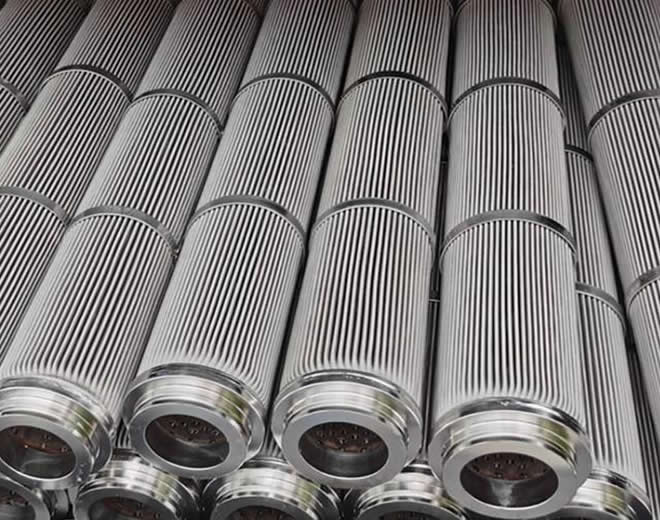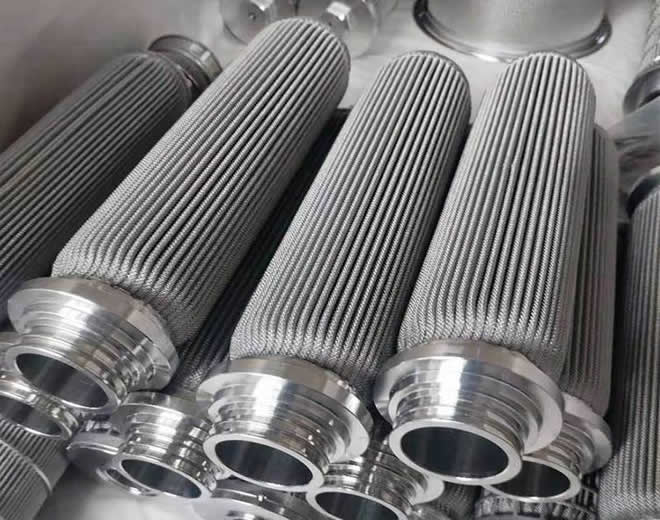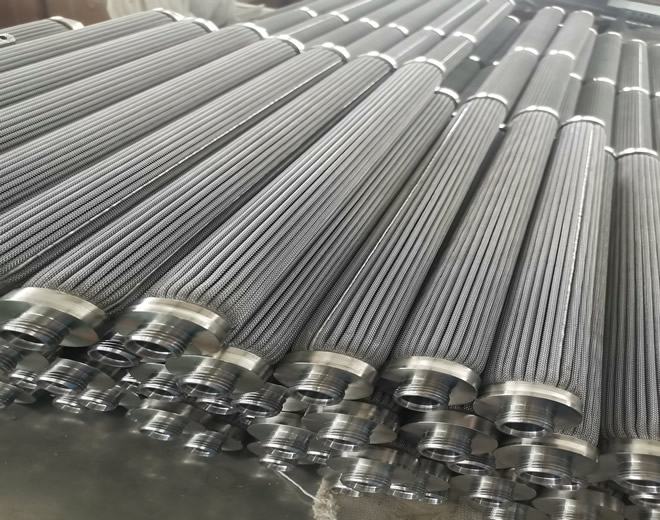Description
Stainless Steel Fiber Sintered Felt Filter Element: A High-Precision Solution for Industrial Filtration
1. Core Composition & Manufacturing Process
Stainless steel fiber sintered felt filter elements are crafted from micron-grade stainless steel fibers (e.g., 316L, 304, or specialty alloys like Hastelloy) through a non-woven laying, stacking, and high-temperature vacuum sintering process. This creates a three-dimensional porous structure with interconnected fibers, combining surface and deep-bed filtration for superior performance.
2. Key Performance Parameters
-
Filtration Accuracy: 0.5–450 μm (some models achieve 0.45 μm), covering a wide range from fine to coarse filtration.
-
Porosity: Up to 85–90%, ensuring excellent air permeability and a low initial pressure drop (<0.2 MPa).
-
Temperature Resistance: Continuous operation from -30°C to 500°C; short-term resistance up to 1000°C (e.g., titanium alloy versions).
-
Pressure Rating: Withstands differential pressures of 6.9–30 MPa, suitable for demanding high-pressure applications.
-
Regenerability: Compatible with backflushing, chemical cleaning, and ultrasonic cleaning for extended service life.
Mechanical Strength: Excellent resistance to shock and cyclic loading with minimal fiber shedding, ensuring stable performance.
3. Technical Advantages
-
1.High Precision & Large Dirt-Holding Capacity: The gradient pore structure (coarse-to-fine layers) traps particles at the surface and deep within the felt, reducing pressure drop and extending replacement intervals.
-
2.Corrosion & Temperature Resistance: Withstands aggressive media (e.g., acids, alkalis, organic solvents) and high temperatures, making it ideal for harsh environments.
-
3.Low Pressure Drop & High Flow: High porosity (85–90%) minimizes energy consumption in hydraulic and pneumatic systems.
-
4.Cost-Effective: Reusable design reduces long-term operational costs compared to disposable filters.
4. Typical Applications
-
Chemical & Petrochemical Industry
-
Filtration of catalyst particles in fluid catalytic cracking (FCC) units at 500°C, achieving 99.9% efficiency.
-
Separation of liquid hydrocarbons from gas streams in natural gas processing.
-
Marine & Offshore Engineering
-
Protection of hydraulic systems (e.g., steering gear, anchor winches) by removing metal particles, preventing valve blockages and improving response accuracy by 30%.
-
Fuel purification to reduce engine wear and extend service life.
-
Pharmaceutical & Food Industry
-
Sterile filtration of pharmaceutical liquids, intercepting microorganisms ≥0.2 μm as an alternative to traditional membranes.
-
Clarification of beverages (e.g., beer, mineral water) while retaining flavor compounds.
-
Environmental & Water Treatment
-
Recovery of heavy metals (e.g., nickel, chromium) from electroplating wastewater for resource recycling.
-
Filtration of ozone-laden air in water treatment to prevent secondary pollution.
5. Selection & Maintenance Guidelines
-
1.Precision Matching: Choose filtration accuracy based on particle size (e.g., 5–10 μm for hydraulic systems, 20–40 μm for lubrication).
-
2.Material Compatibility: Select alloys like Hastelloy or titanium for highly corrosive media (e.g., seawater, concentrated sulfuric acid).
-
3.Pressure Monitoring: Replace or clean filters when pressure drop reaches 0.2 MPa.
-
4.Regular Inspection: Check for surface damage and sealing performance every 6 months to prevent leaks.
-
5.Cleaning Protocol: Use chemical cleaning at 30–40°C to avoid protein coagulation in food/pharma applications.
6. Industry Case Studies
-
Petrochemical FCC Unit: A 316L stainless steel fiber sintered felt filter achieved 98% catalyst recovery, saving $500,000 annually in catalyst costs.
-
Marine Hydraulic System: Replaced traditional filters with sintered felt elements, reducing metal wear in bearings by 60% and extending maintenance intervals from 3 to 18 months.
7. Conclusion
Stainless steel fiber sintered felt filter elements combine high precision, durability, and versatility, making them indispensable in industries requiring reliable filtration under extreme conditions. Their ability to reduce energy consumption, minimize waste, and enhance operational efficiency positions them as a sustainable choice for the future of industrial filtration.









